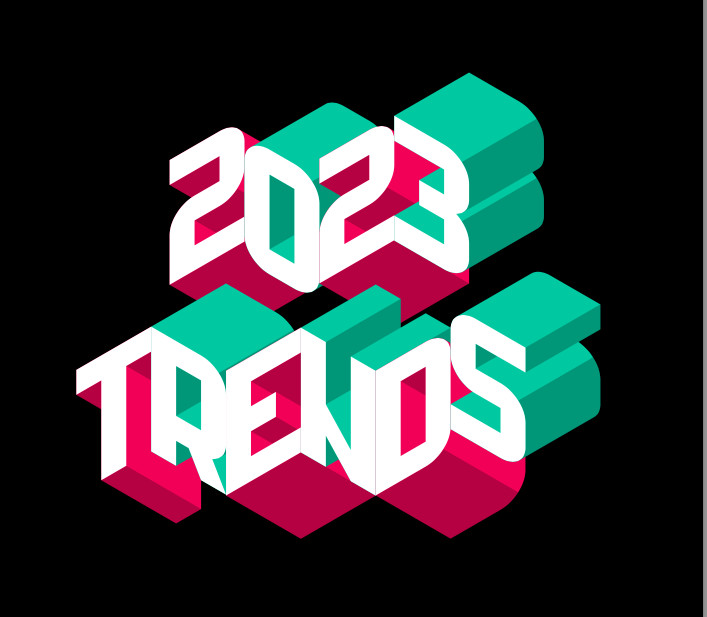
From the economy to the environment to digital innovation, 2023 is set to be a year of great societal change. But how will this impact everyday lives in the bar industry? Here Anna Sebastian’s top trends to watch out for as she sizes up the coming year.
Digital acceleration
Digital solutions will continue to make for a more efficient workplace, aiding effective business decisions, and allowing for a mixture of hybrid and remote working within the wider drinks industry. In operations, 2023 and beyond will see more uptake of efficiency technologies and better systems for recycling, reservations, tills, back of house, reporting and stock-takes, which will reduce the need for staff’s in-venue hours. Technology will also continue to be integrated into the venue’s customer interactions. At Soho House, using its app guests have access to reservations and can network with other members and settle their bill with speed.
Locality and supply chains
Off the back of supply issues for international brands in 2022, I believe next year smaller, locally pushed products, with shorter supply chains, are going to have their moment. Bars and restaurants are also going to want to be seen to look closer to home and champion smaller brands that touch on those points of locality, carbon footprint, sustainability and authenticity.
Sustainability
This continues to be a big conversation with more and more bars attempting to reduce waste. The next focus looks to be the reduction of glass bottles for spirits, which is being championed by Ecospirits and its UK partner Mangrove. Ecospirits’ patent-pending system of closed-loop technologies offers a substantial reduction in the delivered cost of premium spirits, and a transformative reduction in waste and CO2 footprint.
It’s now time for bars to catch up with restaurants and start thinking about values and beliefs beyond just the GP and marketing budget that comes with brands. Groups such as Hawksmoor have become B Corp certified – which will become increasingly valued – focusing on reducing supply chains and the carbon footprint around their transportation of food and drinks.
Garnishes, which are high on waste, will also be under the microscope next year. Creative solutions will be needed or more edible garnishes made as bartenders approach drinks in the same way a chef would when plating food – nothing is extraneous. According to research, 64% of people (Kantar Global Survey 2022) want to be more mindful of the environment when it comes to food and drink.
Offering value
With the cost of living going up, people are more cautious about where they spend their money on a night out. Such high expectations mean venues must create an overall experience
for the guest, with attention to the nuances of the customer journey, to provide value. Venues such as Sexy Fish, The Maine and the new Bacchanalia are good examples of a joined-up experience, where all elements work in harmony to offer more than a drink at a bar.
What will we be drinking?
Behind the bar, we will see more collaborations with bartenders and chefs to co-create wet-led experiences in bars. With this desire to create experiences and add value, we could also see a change in approach to cocktails. Where minimalist presentations, pared-back garnishes and highballs have become popular in recent years, we could see a return to a more theatrical style of drink.
Technique will still lead innovation, but drinks that have visual wow factor through glassware, ice or garnishes could also return, helping to provide a sense of celebration and overall experience. I see the cocktail menu following suit, furthering the storytelling and engagement and increasingly will have a take-home element to it too.
Liam Davy from Hawksmoor says that “drinks have felt a bit flat since the pandemic, with many bars showcasing the same style of drink”. The new menu at Hawksmoor is celebratory, indulgent and designed to give people a lift.
In terms of categories, low/no will continue to grow, especially among Millennials and Gen Zs and will start to go into an even more premium space, with better-quality products that stand up well in cocktails.
Wellness
Wellness and mindfulness will grow in importance for bartenders, with bars increasingly introducing programmes to support their staff. The challenge remains to integrate these into the work-time schedule, so that team members benefit from them without cost to time or pay.
Access to health care through the business is something that more and more companies are looking into, as well implementing better childcare policies and hiring more staff on flexible working hours and in part-time roles. Employee Assistance Programmes, designed to offer mental health support and counselling through in-person and virtual support, are an affordable service for the wellness of staff.
As the recruitment crisis continues, employers will not only look at pay increases, but the overall package offered to staff. The question employers need to be asking is “what is going to improve your life?”, and often it is the small things that have real impact.
Brands are also looking at ways to create more holistic experiences to engage with bartenders. More mindful and memorable connections can be made through activities and the promotion of brand values instead of leading with product. This will create long-term relationships and memories building loyalty and a different, more mature, dimension to the bar industry.
As we tread carefully into 2023, we carry a lot of trepidation on our shoulders. However, there is a huge amount of positivity about the future of our industry. There’s never been a better time to put our best foot forward, celebrate the everyday and create moments for our guests that turn into memories.


